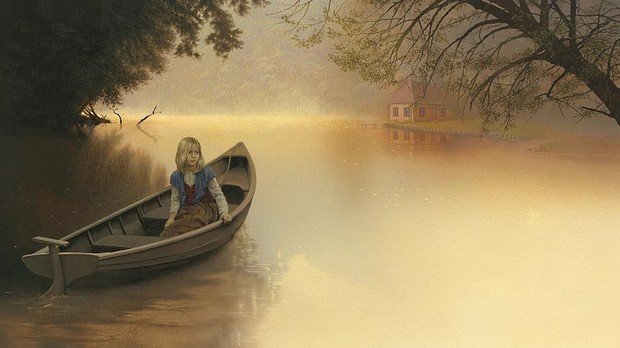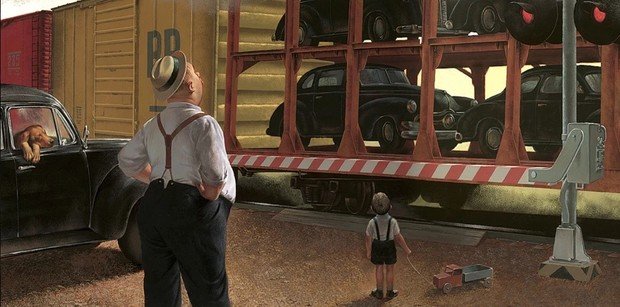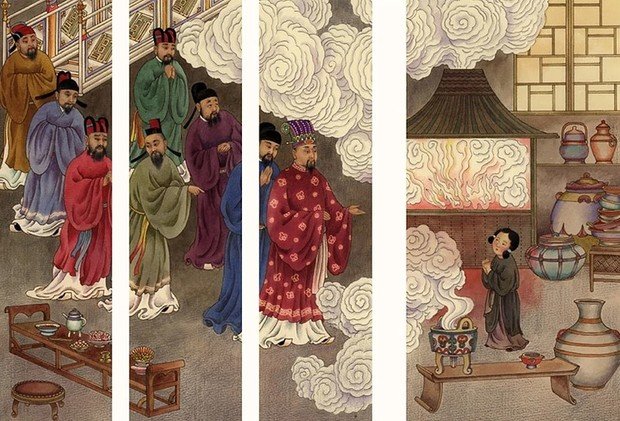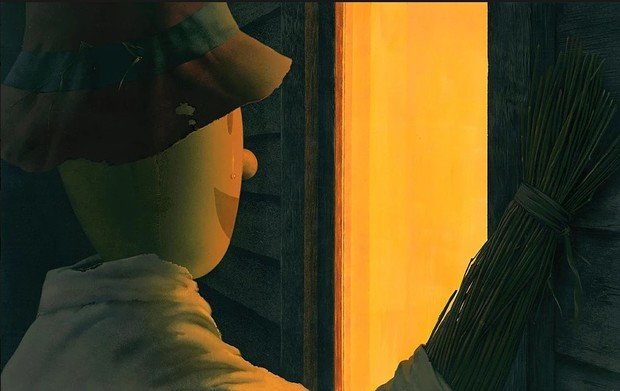''Being a book illustrator nowadays is, of course, old-fashioned, but very cool''
An artist from the city of Kazan becomes a famous illustrator of children's books in New York
Illustrator Bagram Ibatoulline has illustrated many children's books, including bestseller The Miraculous Journey of Edward Tulane by Kate DiCamillo. After graduating from the Kazan art school, then the Moscow State Academic Art Institute, he moved to the United States, where he lives to this day. Realnoe Vremya contacted the artist and asked him about the profession of illustrator, life in Kazan and the intricacies of working on children's books.
''Kazan for me remains the city where I spent the best years of my youth''
Bagram, first I would like to ask you to tell us about when you became interested in art and how you came to the illustration?
According to my parents, I started to sculpt from clay about at the age of four, I started to draw later, as I remember, aged six. When I was ten years old, I entered the children's art school in Omsk. In this school, thanks to very attentive and intelligent teachers, I truly became interested in art.
The thing is that I started to do children's illustration only in the United States, ten years after moving, by lucky chance. A friend of mine, an illustrator, offered to work together on his book, so I started to work with children's illustrations. When mastering the craft, I was not thinking about a specific area of fine arts, in which I could realize my creative ambitions, the main thing for me was to do what I was interested in.

Why did you move to the USA? Do you follow what is happening at home today?
My move to the United States in 1991 was primarily due to the desire to decide my fate myself, I was twenty-six years old, and, among other things taking place in the country, the prospects of an artist in the USSR seemed very sad. As for the second part of the question, I cannot say that I am encouraged by it, but I, of course, follow the developments in Russia.
Could you tell us more about the Kazan episode of your life? Did you think about staying in Kazan after graduation from the local school?
Despite the fact that I did not really want to move from Omsk to Kazan at the age of 15, over the years I understand that it was a very lucky change in my life. After finishing the eighth grade in Kazan, I finally left the secondary school, of which I had become tired by that time, and entered the Kazan art school. It was the best four years in the sense of mastering, learning the intricacies of painting and drawing, self-awareness as an artist. I was very lucky to find myself in the company of like-minded people, we could spend hours discussing the properties of colours, the play of light and shadow, the possibilities of different ways and techniques of image.
I did not think about staying in Kazan after graduation, I graduated with honours, and I, of course, wanted to continue my education. The natural choice was the Russian Academy of Arts in Saint Petersburg, many teachers in our school were graduates of this institution. The life, of course, made some adjustments to my plans. After passing all the exams, I still was not enrolled, I was offered to return and start studying after serving in the army. Having served in the army, I did not want to return to Petersburg and entered the Surikov Institute in Moscow. Thus, Kazan for me remained the city where I spent the best years of my youth and where most of my relatives live today.

''I haven't illustrated Tatar books yet''
What kind of art school is it in Kazan?
It is difficult for me to judge the so-called Kazan art school, I do not know much about different schools, but I think that the Kazan school favourably distinguishes by its traditions and serious approach to teaching the realistic painting.
Have you ever illustrated Tatar books? Would you like to take on such project?
I have not illustrated Tatar books yet, probably, I would take it if it is an interesting project. While living in the US, I mostly work with American authors or illustrate world children's classics. I have no doubt that there are a lot of talented artists in Tatarstan, who are, so to speak, in the environment can better convey all the specifics and richness of the Tatar culture in the illustrations to the Tatar books.
Each of your illustrations has a special individual atmosphere. How do you achieve this? What techniques and materials do you prefer to use in your work? Why did you choose to work in classical style (not like Quentin Blake, for example)?
In the illustrations to different children's books, I try to create a special atmosphere inherent in a particular story after reading the text several times and choosing the style of the image that is most suitable for this book. Technique and materials depend on artistic decision of a specific task; I prefer use watercolour or acrylic gouache. I feel comfortable working in so-called classical style, although I do not exclude the possibility of using a different style if I decide that it will fully correspond to my vision of the book.

It is believed that the work with fairy tales requires artist's special way of thinking, as a rule, only people who keep the inner child in themselves until old age are capable of doing this...
I find it difficult to judge the opinion about the special thinking of the artist working with children's books. I try to perceive the plot directly and openly, whether it is a fairy tale or a real story, I try to get used to the characters and dive into the atmosphere as deeply as possible, I give freedom to imagination. It is a luck when there is a symphony of author's text and illustrations, when one without the other does not work. I do not think that children's books without illustrations would be just as popular, although it is necessary to leave the opportunity to develop to the child's imagination, and with the help of images to try only to add interest to the plot of the book.
''In Russia there prevails the tendency to illustrate books in simplified children's style''
Could you tell our reader about how the illustration for a short children's story is created? How is the whole process built — from scene selection to the image designing?
The process of creating illustrations begins with repeated reading of the text. Gradually, the imagination identifies specific images, which can gradually be reflected on the paper. Sketches are then transformed into scenes, and the characters' images become clear. This is roughly how the work goes.
Is it true that there is always a conflict between the ambitions of the artist and desires of the customer?
The customer is the publishing house, and I, as a rule, have no conflict, as the customer, turning to me, fully trusts my professionalism. I myself decide whether to illustrate the proposed book or not, so it is always interesting for me to work on illustrations for the book I chose, it is not always easy, but always pleasant.

Are book illustrations in Russia and abroad different? Perhaps you have noted some fundamental differences?
It is difficult for me to compare book illustrations in Russia and abroad. As far as I can see, in the United States there is a very large number of children's books and an incredible variety of styles in illustrations, it seems to me that in Russia there is a tendency to illustrate books in simplified children's style.
If you read interviews with young illustrators (people aged from 20 to 30), you will notice one thing: many believe that being a book illustrator is old-fashioned nowadays. Can you agree with the younger generation? Is this trend becoming outdated?
In my opinion, being a book illustrator nowadays is, of course, old-fashioned, but very cool. Book illustrations seem to be an outdated direction, but not completely outdated. I wish the generation of young illustrators to find new ways to apply their talents.
At the same time, there is an opinion that modern children's book illustration becomes ''flat'', too simplified. What picture and what trends do you personally observe?
To be honest, I am too passionate about my work and do not follow the changing trends.

What would you like to illustrate? What is your dream project? What exactly would you not undertake?
There are quite a great number of books that I would be happy to illustrate, but I do not have a dream project as such. I definitely would not undertake to illustrate what I'm not interested in.